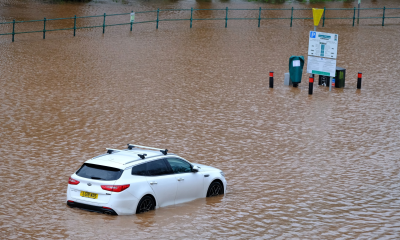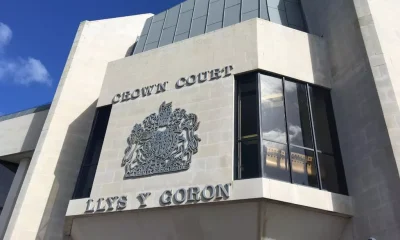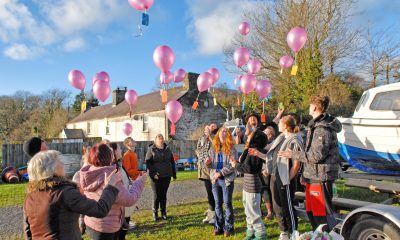Business
An experimental nuclear fusion reactor could be built in Pembrokeshire

PEMBROKESHIRE could be the location of an experimental nuclear fusion reactor, which could produce abundent clean energy, if the council backs plans for a site on land owned jointly between Valero oil refinery and Pembroke Power station.
Pembrokeshire County Council’s Cabinet will be asked next week (May 17) to support the project, which it is hoped could create limitless energy.
The officers of the council are recommending to Cabinet that members approve the nominated site being included on the list of UKAEA candidate sites.
Elsewhere in Wales, the Vale of Glamorgan Council is bidding for it to be built at the Aberthaw power station site.
Communities had until the end of March to nominate locations.
If approved the nuclear fusion station, the council’s officers say, could position Pembrokeshire at the international forefront of the clean energy revolution, bringing visibility to the community on a global stage. It was also recommended that the project will bring long-term and enduring environmental, employment, skills and economic benefits to the host community.
However, Greenpeace believes that nuclear fusion is an expensive distraction from the real agenda of providing environmentally benign, reliable energy supply. The campaign group gas also written to Parliament saying that the deuterium-tritium (D-T) fuel mixture used in nuclear fusion produces four times as many high energy neutrons per kilowatt-hour of energy produced than sandard nuclear fission.

Nevertheless the government has a concept programme called STEP, which is an ambitious programme for the conceptual design of a fusion power station. It is a UKAEA administered programme, currently with £220 million funding to produce a phase 1 concept design by 2024.
Beyond 2024, it is claimed, phase 2 intends to move into the engineering design and build phases to deliver the prototype of a commercially viable fusion plant. The prototype will hopefully demonstrate the commercial viability of fusion. The learning from this will enable the future development of a UK fleet of commercial fusion plants, the government said. The target date for the first fully operational plant will be 2040.
In November 2020, the UK Government released an open call to communities across the UK to identify sites that could accommodate a STEP power station, with the site near Valero being chosen.
A report to councillors sitting on the Cabinet states that unlike with conventional nuclear power, there is a benefit of limited risk of nuclear materials proliferation. This is because nuclear fusion doesn’t employ fissile materials like uranium and plutonium. There are no enriched materials in a fusion reactor that could be exploited to make nuclear weapons.
The STEP programme said that it seeks to maximise the recycling and re-use of materials and only use disposal routes where there is no other option.
It said to this end research is being carried out on suitable materials to minimise decay times as much as possible. Any radioactivity of the components in the tokamak structure is classed as low level and relatively short lived.
Fusion is regarded by Government as being carbon free, safe, low land use, low, manageable waste, reliable energy baseload with unlimited fuel.
Paul Miller, Cabinet Member for Economy, Tourism, Leisure and Culture on Pembrokeshire County Council said: “The Haven Waterway has provided livelihoods, underpinned by fossil fuels, for thousands of Pembrokeshire families, mine included, for more than 50 years.
“Its my job to help ensure the waterway continues to provide high skilled, engineering, science and technology jobs for the next generation of this county and so linked to our focus on climate change (and in addition to our existing multi-million pound commitments to supporting wind, wave and tidal clean power generation) my team have been exploring whether we can also support the development of clean, green fusion technology.
“It very early days in the UK Atomic Energy Authority’s site selection process but we’ll provide regular updates as things progress.”
What is nuclear fusion?
Fusion is the process that takes place in the heart of stars and provides the power that drives the universe. When light nuclei fuse to form a heavier nucleus, they release bursts of energy. This is the opposite of nuclear fission – the reaction that is used in nuclear power stations today – in which energy is released when a nucleus splits apart to form smaller nuclei.

To produce energy from fusion here on Earth, a combination of hydrogen gases – deuterium and tritium – are heated to very high temperatures (over 100 million degrees Celsius). The gas becomes a plasma and the nuclei combine to form a helium nucleus and a neutron, with a tiny fraction of the mass converted into ‘fusion’ energy. A plasma with millions of these reactions every second can provide a huge amount of energy from very small amounts of fuel.
One way to control the intensely hot plasma is to use powerful magnets. The most advanced device for this is the ‘tokamak’, a Russian word for a ring-shaped magnetic chamber. CCFE’s goal is to develop fusion reactors using the tokamak concept.
Advantages of fusion power
With increasing concerns over climate change and finite supplies of fossil fuels, we need new, better ways to meet our growing demand for energy. The benefits of fusion power make it an extremely attractive option:
- No carbon emissions. The only by-products of fusion reactions are small amounts of helium, an inert gas which can be safely released without harming the environment.
- Abundant fuels. Deuterium can be extracted from water and tritium will be produced inside the power station from lithium, an element abundant in the earth’s crust and seawater. Even with widespread adoption of fusion power stations, these fuel supplies would last for many thousands of years.
- Energy efficiency. One kilogram of fusion fuel could provide the same amount of energy as 10 million kilograms of fossil fuel. A 1 Gigawatt fusion power station will need less than one tonne of fuel during a year’s operation.
- Less radioactive waste than fission. There is no radioactive waste by-product from the fusion reaction. Only reactor components become radioactive; the level of activity depends on the structural materials used. Research is being carried out on suitable materials to minimise decay times as much as possible.
- Safety. A large-scale nuclear accident is not possible in a fusion reactor. The amounts of fuel used in fusion devices are very small (about the weight of a postage stamp at any one time). Furthermore, as the fusion process is difficult to start and keep going, there is no risk of a runaway reaction which could lead to a meltdown.
- Reliable power. Fusion power plants will be designed to produce a continuous supply of large amounts of electricity. Once established in the market, costs are predicted to be broadly similar to other energy sources.
Business
Senedd approves £116m transitional relief for business rates
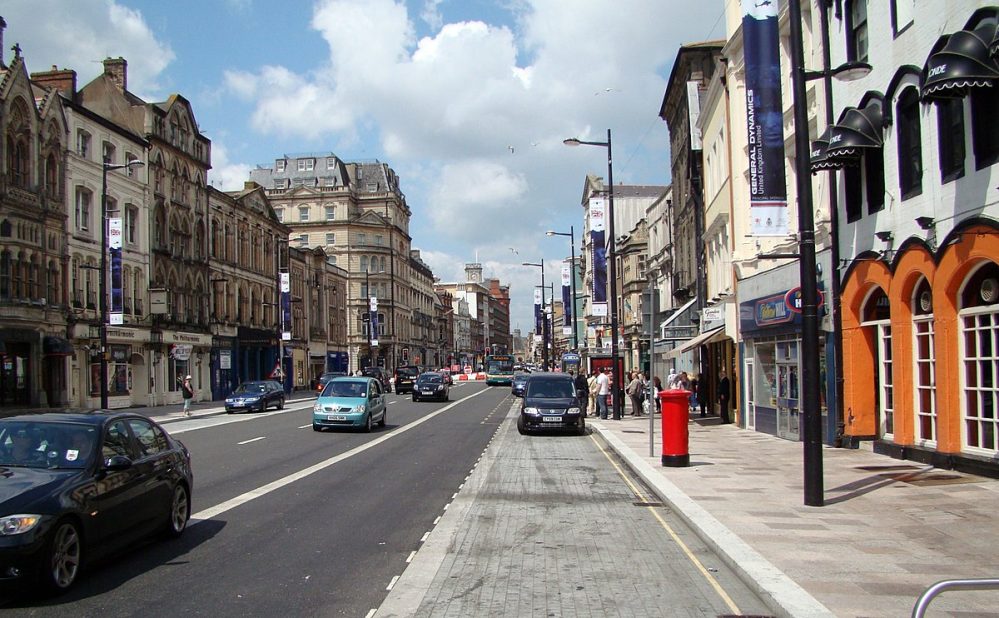
BUSINESSES facing sharp hikes in tax bills after the 2026 revaluation will see increases phased in over two years after the Senedd backed a new transitional relief scheme.
Senedd Members unanimously approved regulations to help businesses which face significant rises in non-domestic rates bills after a revaluation taking effect in April 2026.
The Welsh Government estimates the transitional relief will support 25,000 ratepayers at a cost of £77m in 2026/27 and £39m in 2027/28. The partial relief covers 67% of the increase in the first year and 34% in the second.
Mark Drakeford, Wales’ finance secretary, stressed the £116m scheme comes on top of permanent rate reliefs which are currently worth £250m a year. He said ratepayers for two-thirds of properties will pay no bill at all or receive some level of relief.
The former First Minister told the Senedd: “In providing this transitional relief scheme, we are closely replicating the scheme of relief we provided following the 2023 revaluation – supporting all areas of the tax base in a consistent and straightforward manner.”
The Conservatives’ Sam Rowlands expressed his party’s support for the transitional relief scheme which will help ratepayers facing sharp increases after the 2026 revaluation.

He said: “We are grateful that the Welsh Government has at least brought forward a scheme that will soften the immediate impact for thousands of Welsh businesses.
“We also understand that if these regulations are not approved or supported… this relief scheme will not be in existence. Many businesses across Wales would face steep increases with no protection at all and that is certainly not an outcome we would want.”
But the shadow finance secretary warned businesses up and down Wales are worried about the increase in rates that they are liable to pay.
Advocating scrapping rates for all small businesses in Wales, Mr Rowlands said: “We’ve heard first-hand from many of those in the hospitality and leisure sector, some of whom are facing increases of over 100% in the tax rates they are expected to pay.”
Responding as the Senedd signed off on the scheme on December 16, Prof Drakeford said the Welsh Government had to wait for the UK budget to know if funding was available. As a result of the time constraints, the regulations were not subject to formal consultation.
Prof Drakeford agreed with Mr Rowlands that voting against the regulations would not improve support, only eliminate the transitional relief package before the Senedd.
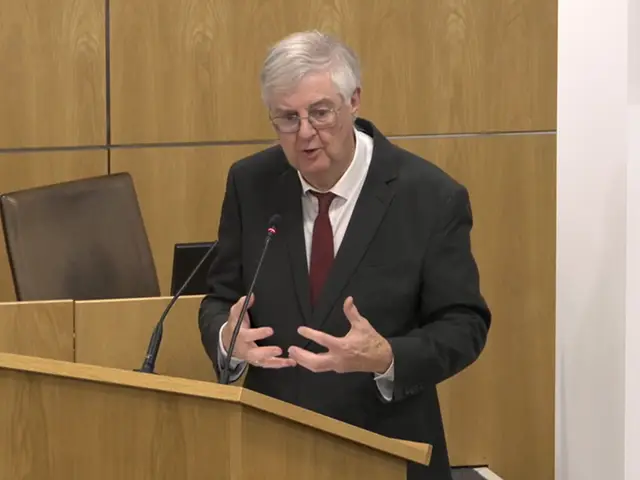
Earlier in Tuesday’s Senedd proceedings, former Tory group leader Paul Davies warned Welsh businesses have already been hit with some of the highest business rates in the UK.
He said: “The latest business rates revaluation has meant that some businesses are now facing rises of several hundred per cent compared with previous assessments…
“Whilst I appreciate that a transitional relief scheme will help some businesses manage these changes, the reality is that for many businesses it’s not enough and some businesses will be forced into a position where they will have to close.”
Business
Pembrokeshire industrial jobs ‘could be at risk’ as parties clash over investment

TRADE unions have warned that hundreds of industrial jobs in Pembrokeshire could be at risk without stronger long-term support for Welsh manufacturing, as political parties set out competing approaches ahead of the Senedd elections.
TUC Cymru says its analysis suggests 939 industrial jobs in Pembrokeshire could be vulnerable if investment in clean industrial upgrades were withdrawn, warning that policies proposed by Reform UK, and to a lesser extent the Conservatives, pose the greatest risk to industrial employment.
The warning comes as the union body launched its “Save Welsh Industry – No More Site Closures!” campaign at events in Deeside and Swansea, calling on all political parties to commit to a five-point plan to protect and future-proof Welsh industry.
According to TUC Cymru, jobs at risk locally include 434 in automotive supply chains, 183 in rubber and plastics and 75 in glass manufacturing. The union body says these sectors rely on continued investment to remain competitive and avoid offshoring.
TUC Cymru said its modelling focused on industries most exposed to closure or relocation if industrial modernisation and decarbonisation are not delivered. It argues that without sustained public and private investment, Welsh manufacturing faces further decline.
A GMB member working at Valero in Pembrokeshire said: “It’s clear Nigel Farage has no clear plan. I can see this industry collapsing under his policies. We need support, not division. His way will lead to job losses across the board and the lights will go out.”
The union body stressed that all parties need to strengthen their industrial policies, but claimed Reform UK’s stated opposition to net zero-related investment would place the largest number of jobs at risk across Wales, estimating that almost 40,000 industrial jobs nationally could be affected. Conservative policies were also criticised, though the TUC said the likelihood of job losses under the Conservatives was lower.
Labour has rejected claims that Welsh industry is being neglected, pointing to recent investment announcements made at the Wales Investment Summit, where more than £16bn worth of projects were highlighted as being in the pipeline across Wales.
Ministers said the summit demonstrated growing investor confidence, with projects linked to clean energy, advanced manufacturing, ports, digital infrastructure and battery storage, and thousands of jobs expected as schemes move from planning into delivery.
Labour has argued that public investment is being used to unlock private sector funding, particularly in industrial regions, and says modernising industry is essential to keeping Welsh manufacturing competitive while protecting long-term employment.
At UK level, the party has also highlighted its National Wealth Fund and GB Energy commitments, which it says will support domestic supply chains, reduce long-term energy costs for industry and help secure both existing and future jobs.
Opposition parties and some business groups have questioned whether all announced projects will translate into permanent employment, arguing that greater clarity is needed on timescales and delivery.
Reform UK has argued that scrapping net zero policies would cut public spending and reduce costs for households and businesses, while the Conservatives have pledged to roll back climate-related targets and reduce regulation on industry.
Unions dispute those claims, warning that higher electricity prices and a lack of investment would make Welsh industry less competitive internationally.
TUC Cymru President Tom Hoyles said Welsh industry needed urgent action from all parties to survive and thrive in the 21st century, warning that policies which sought to turn back the clock could put thousands of Welsh jobs at risk.
With industrial areas including Flintshire, Neath Port Talbot and Carmarthenshire also identified as facing significant pressures, the future of Welsh manufacturing is expected to remain a key political issue in the run-up to the Senedd elections.
Business
New digital toolkit aims to future-proof rural Welsh businesses in AI search era

A NEW digital toolkit developed in Ceredigion is being hailed as a potential game-changer for small businesses in rural Wales, as artificial intelligence reshapes how customers discover local services online.
Created by Antur Cymru Enterprise, the SMART Busnes programme is giving Welsh SMEs an early foothold in Answer Engine Optimisation (AEO) – a rapidly emerging discipline focused on how businesses appear within AI-generated search responses.
As AI-driven tools increasingly replace traditional search results with instant, conversational answers, SMART Busnes – supported by the UK Shared Prosperity Fund – has launched one of the first practical AEO toolkits available in Wales.
The initiative is being led by Digital Business Advisor Lynne Rees and centres on a new insight framework known as Agentic AEO. The approach is designed to help rural and micro-businesses remain visible online as search engines and AI platforms prioritise structured, easily interpreted information over conventional keyword-based webpages.

Kevin Harrington, Project Manager for SMART Busnes, said the shift represents a fundamental change in how businesses need to think about their online presence.
“AI search is here to stay, and our Agentic AEO insight series isn’t a tweak – it’s a reset,” he said.
“It’s about helping Welsh SMEs show up wherever customers search: on Google, on social media, and increasingly within AI-generated answers. This gives rural businesses access to the kind of digital advantage that large brands often pay thousands of pounds for.”
Traditional search engine optimisation is already being overtaken by AI-led systems such as Google’s Search Generative Experience and tools like ChatGPT, which provide direct responses rather than lists of links.
For small businesses, this presents a growing risk. If online content is not structured in a way AI tools can understand, businesses may fall below the point where potential customers ever see them.
Agentic AEO focuses on improving clarity, structure and user intent across websites, social media platforms and Google Business Profiles. By presenting information in formats AI systems can easily process, businesses can improve both visibility and credibility within automated responses.
The SMART Busnes AEO Insight Series provides practical support, including step-by-step guidance on restructuring webpages, examples of effective layouts, and tailored AI prompts to help business owners produce optimised content quickly and affordably. Even modest changes – such as a website review, targeted content update or short advisory session – can influence how a business appears in search results over the coming year.
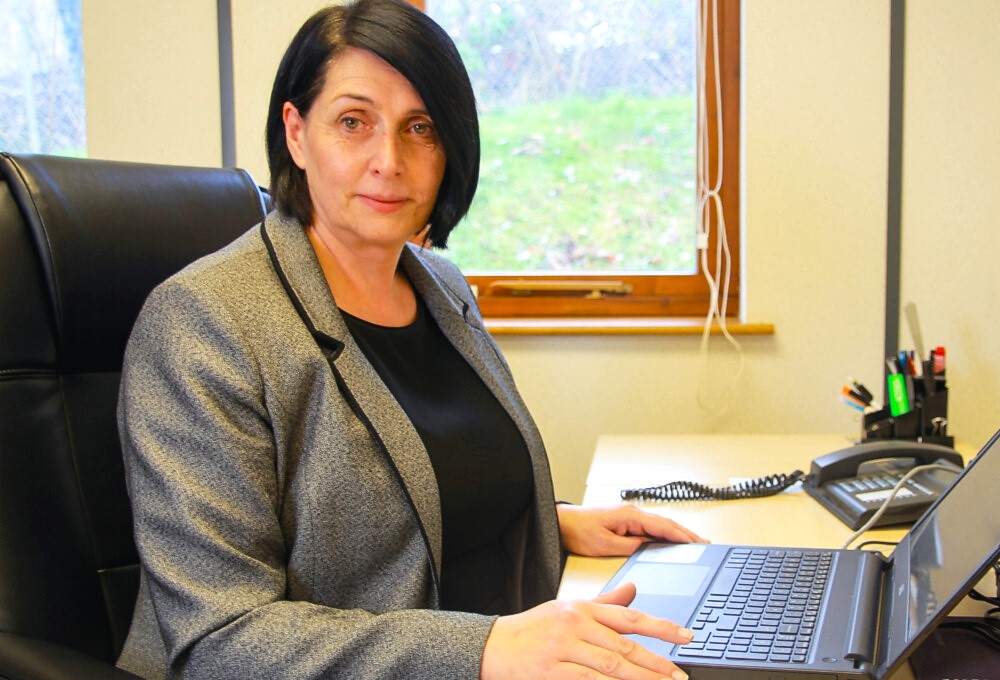
Antur Cymru chief executive Bronwen Raine said the programme was designed to help businesses adapt to long-term change.
“SMART Busnes was created to support small businesses through change, not simply to chase trends,” she said.
“The Agentic AEO insight series shows how Shared Prosperity Fund investment is driving genuine innovation, building confidence, skills and sustainability across local economies.”
With many SEO providers in Wales still focused on older techniques, SMART Busnes is positioning Ceredigion and the wider Mid and West Wales region at the forefront of AEO adoption.
By translating emerging digital theory into accessible, practical support, the programme aims to strengthen resilience among rural enterprises and ensure they remain visible, trusted and competitive in an AI-led future.
More information about SMART Busnes and the support offered by Antur Cymru Enterprise is available via the organisation’s website.
-

 Crime22 hours ago
Crime22 hours agoMilford Haven man jailed after drunken attack on partner and police officers
-

 News4 days ago
News4 days agoDyfed-Powys Police launch major investigation after triple fatal crash
-

 Crime3 days ago
Crime3 days agoMan sent to Crown Court over historic indecent assault allegations
-

 Crime2 days ago
Crime2 days agoMan charged with months of coercive control and assaults
-

 Crime20 hours ago
Crime20 hours agoTeenager charged following rape allegation at Saundersfoot nightclub
-

 Crime5 days ago
Crime5 days agoMan spared jail after baseball bat incident in Milford Haven
-

 Crime3 days ago
Crime3 days agoMilford Haven man admits multiple offences after A477 incident
-

 Crime2 days ago
Crime2 days agoWoman ‘terrified in own home’ after ex breaches court order







